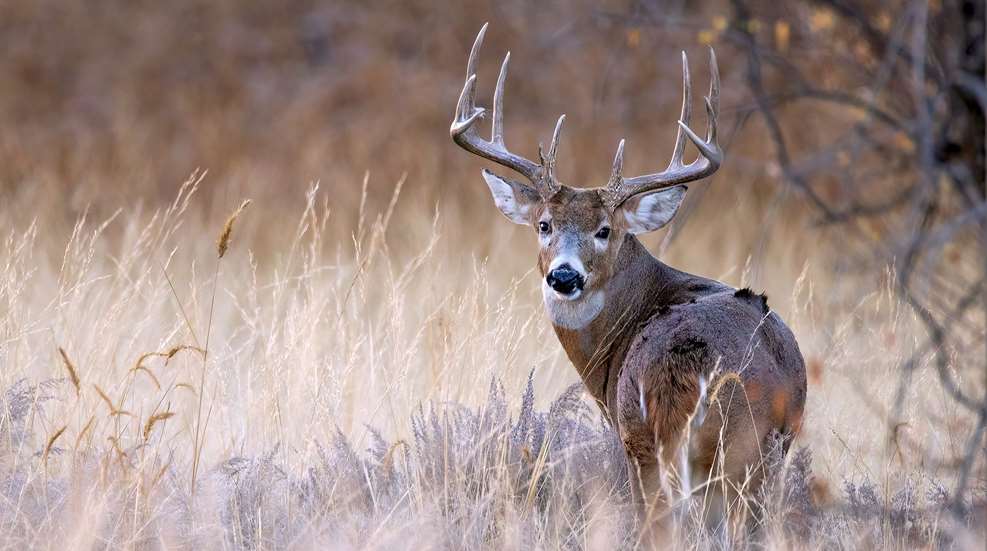
You can sing this to the melody of Garth’s “Friends in Low Places”: “I find deer in odd places where the habitat sucks but the buck chases the does all day.”
Most recently this odd place was deep in the sandhills of northwest Nebraska some 25 miles from that state’s famous ribbon of whitetail paradise called the Platte River. Water, brush, trees, lowland cornfields. Prairie Rock Outfitters humored me when I begged to hunt away from this classic cover.
“Pastures, man,” I explained. “Mule deer country with a few crop fields. Isolated shelterbelts or old farmsteads. That’s where I find most of my biggest whitetail bucks. Got any of those I can hunt?”
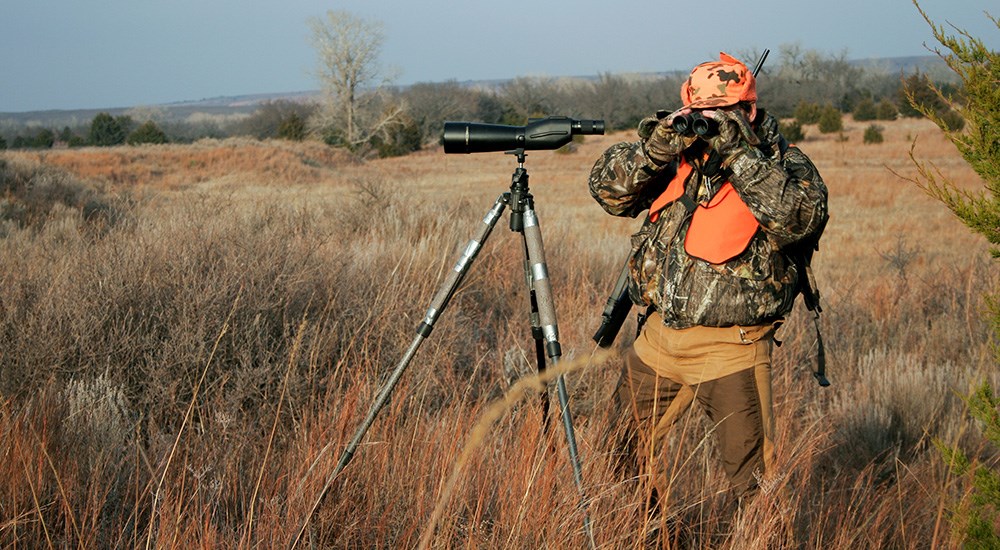
Whether Prairie Rock figured the customer is always right or I was a harmless old man, they agreed to send a guide to show me some fringe whitetail country and get me out of their hair. So it was that my guide, Justin, and I found the camp’s biggest buck of the week.
The method to our madness (turned out Justin was onto these iconoclastic bucks as much as I) was to pinpoint a cluster of irrigated crop fields near a few old tree plantings and dense stands of sage. Sage is typically seen as habitat for sage grouse, mule deer, pronghorns and coyotes, but whitetails welcome it as just more shrub cover. A miniature forest. Throw in dense stands of 4- to 5-foot-tall prairie grasses, a few spiny yuccas and plenty of convoluted, rolling sand hills and you have more than enough cover to hide a small army of whitetails. Not that you’re ever likely to find armies of them there. The whitetails using such habitat are more like scouts. Pioneers taking a risk where their more sedentary compatriots fear to tread.
■ ■ ■
“I’ve seen some good bucks along this strip of trees quite often,” Justin said as we pulled to a stop near an abandoned ranch. His use of the word “trees” was as much historic as accurate. Yeah, they were trees, but half were dead and the remainder broken, tangled, low and interlaced with dry, objectionable weeds common to previously disturbed soils in this notoriously erosive landscape. In other words, whitetail hidey holes.
“Glass those irrigated cornfields to the east and north,” the native Cornhusker continued. “They should be coming off the feed at first light. If they head this way, we’ll try to cut them off.”
Justin was singing from my old songbook. I’d spent 30 years hunting similar prairie country with the same techniques. Get high, preferably near some bedding cover, and glass distant foraging sites, usually wheat, milo, alfalfa or cornfields. Spot a buck, break out the spotting scope and study antlers at 40- to 60-power, determine a stalking route and hit the ground running.
“Big-bodied buck a mile east. Heading north. There’s another field over that sand ridge. He’s probably going to check it for does,” Justin said.
“I’ve got three, no four, no six coming over the yucca ridge south of us,” I announced. “There’s antlers bobbing behind them. Look pretty fair … tall, fairly heavy … aww, narrow. No spread.”
“I’ve seen him before,” replied Justin. “This one in the corn probably isn’t what we’re after either, but we might want to get out in the sage and work our way to that north field. Could be all kinds of deer out there.”
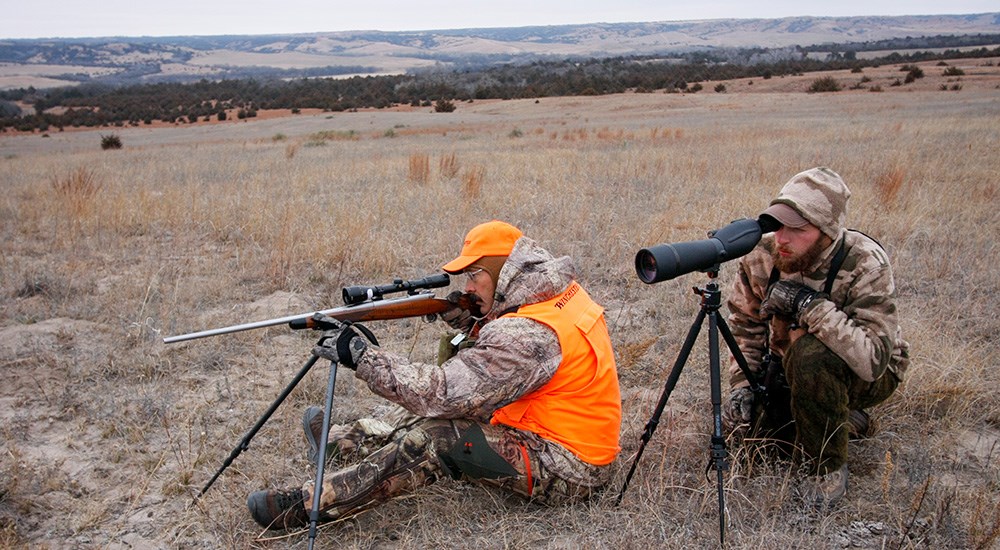
Once the dawn rush hour was over we packed up and began the mid-morning walkabout. Call this Eastern still-hunting in the open. You cover more ground and cover it faster than you ever should when still-hunting woodlands because you can see so well. Glass every inch of cover, then move into it quickly until new ground is exposed. Just be sure to slow with rifle ready when breaking over ridge crests, even small ones. Like the little rise under which a young buck exploded from slingshot range.
“Eleven yards!” I stage whispered after the buck had fled and I’d paced off the distance to its sandy bed. It had been lying beside a large, many branched yucca just under the lip of the sand hill. “If he’d been the big one I could have shot him, but I’d rather see him before he runs!”
“How about this one?” Justin asked a few minutes later when he spotted another buck wandering in from the north. It, too, wore less than heart attack antlers, but demonstrated how our famous woodland deer operate in mule deer country. Cruising for the ladies, never mind the wide-open sky. And he found a trio halfway between us. The doe and two antlerless yearlings rose from behind yet another sharp cut in the sand to prance away from the young buck, not quite ready for his advances.
■ ■ ■
So the morning went, much like scores of other mornings I’ve spent searching atypical whitetail range. Most netted more information than venison, but that’s an important part of successful hunting, too. One must scour the grounds, eyes peeled for trails, rubs, scrapes, tracks, droppings. Then this information must be put into context with the greater surrounding landscape. Is this a travel route or bedding site? How far from the preferred forage? Where would deer run if spooked by coyotes or other hunters coming in from the south, west, east? Where can you glass this cover from a safe distance?
Compiling such information over days, weeks and years increases one’s success exponentially, but one must always modify based on changing habitat conditions. Floods and fires can mess things up, but usually changing crops do it. The alfalfa field that lured surrounding deer the previous year might this fall be plowed for the next season’s milo crop. Keep moving.
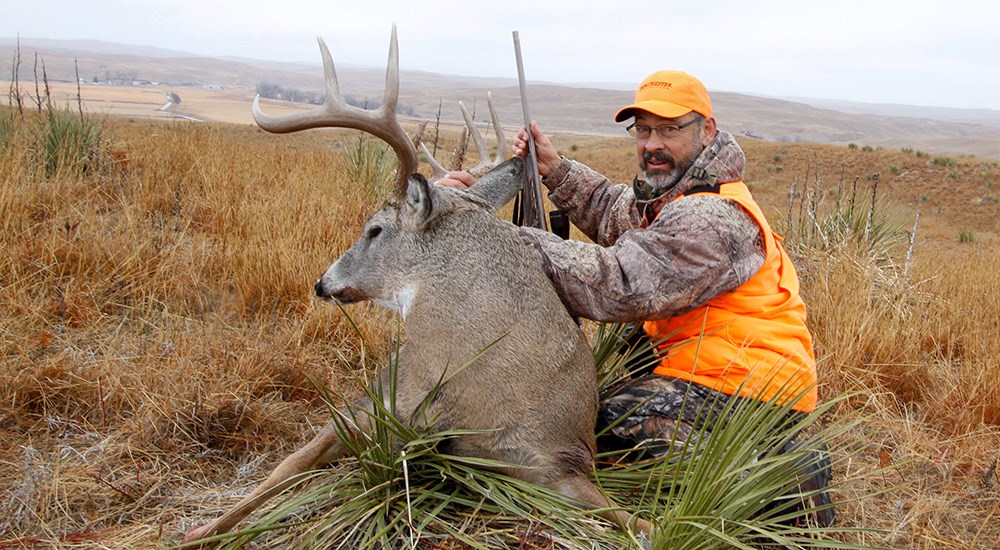
Commonly your best chances come while watching previous hot spots, but sometimes serendipity hits where you least expect it. My wife and I were once walking back from a morning watch over a previous year’s hot spot, wondering why we hadn’t seen a single deer. “They filed through here in lines last year,” I explained as we shuffled through the dry prairie grasses. “Came from the east. I wonder if they plowed that old wheat field up there.” Having arrived in camp in the dark, we hadn’t had time to check field status. But that wouldn’t matter in a few more seconds because I spotted a thicket on the move …
There was a line of willows in a dry wash to our left and flickering through the thin willow wands were more and fatter antler tines than I’ve seen on 10,000 other deer. This was mass on the move, antlers the likes of which elk would be proud to carry. I grabbed Betsy’s arm, pointed. We stood transfixed, dumfounded as one of the heaviest antlered whitetails either of us will ever see trudged out of that ditch, climbed into the clear on the grassy side slope, saw us and stopped, broadside, at most 75 yards away, and spun that miraculous rack our way. “Is he a really big one?” Betsy asked.
“Bigger than 99.9 percent of what hunters will ever see on the hoof!” I whispered as I brought my .257 Wby. Mag. to bear. The crosshair settled tight behind his massive shoulder. Then shifted to his incredible neck, then centered on that rack. Six clean points per side, tips wider than most mature buck tines at their junction with the main beam. Main beams protruding 3 or 4 inches past ear tips. And to set up this once-in-a-lifetime shot, all we did was wait along the previous year’s travel route, then walk nonchalantly back to the truck well after the morning’s deer activity should have been over.
I can’t tell you what that buck scored because we never shot it. The only tags we held said “Antlerless Whitetail Only.”
■ ■ ■
That wasn’t going to be an issue on my Nebraska hunt. I had the buck tag. I had the knowledgable local guide. He knew the area and its unusual potential. He’d even heard solid reports of a bigger-than-usual buck haunting the area. We just had to find him. So we hiked. And glassed. And spotted deer. Mostly mule deer, good sized harem bucks with their clusters of does, six to 10. We maneuvered and eased around to minimize disturbance, but inevitably a few bounced across the hills, often stirring up other bands in view.
“Hope we don’t spook the whitetails outta here,” I said late in the morning.
“We could,” admitted Justin. “We’ve pretty much scoured these hills anyway. Rather than push our luck to check those on the other side of the corn circle we should head back to the truck and check another area like this north of here. We’ll come back this evening and watch those hills to the east. He’s probably out there.”
This is usually the smart move. While I’ve walked up and stalked many a buck from dawn through lunchtime, I’ve seldom gotten better than white flags flashing when trying to still-hunt brush cover midday. The deer are usually bedded, hidden and tuned in to crunching gravel and grass. They have the advantage when they’re watching the landscape and you’re guessing which of two dozen patches of cover they might be in. Sometimes you can spot antler tines above the thicket, and then it’s quite possible, sometimes even easy to stalk close. The trick is clearing a shot. You can wait hours for a buck to stand. Or you can maneuver close to clear a shot, but chances are it will be at a running deer. I’ve pulled this off several times, screwed it up several more. The smart move is to wait, but the excitement of youth rarely allowed that! I’d push the envelope and take my chances, one of which led to one of the top three bucks I’ve ever eaten.
This was a prairie deer that chased a doe into a thicket just before sundown. I didn’t have time to wait them out, so I walked right toward that thicket, hoping they were too preoccupied to notice me. When they finally did the doe broke out the backside, buck on her tail, but when she stopped, turned to me, stomped and snorted, the buck got the message and abandoned the romance. He dropped his tail and hammered due south, never even looking my way. A 140-grain Partition handload from my Ultra Light Arms M20 in .284 Win. rolled him in mid-stride.
■ ■ ■
That was a quarter-century ago and I didn’t feel as if the intervening years had improved my offhand shooting much, so we wanted to catch this odd country Nebraska buck unawares. I was packing a Browning X-Bolt in 6.8 Western. It was throwing 175-grain Sierra GameKings 2832 fps right where the Leupold scope pointed, every shot, and as far as I cared to dial the CDS turret. Confidence building performance and practice.
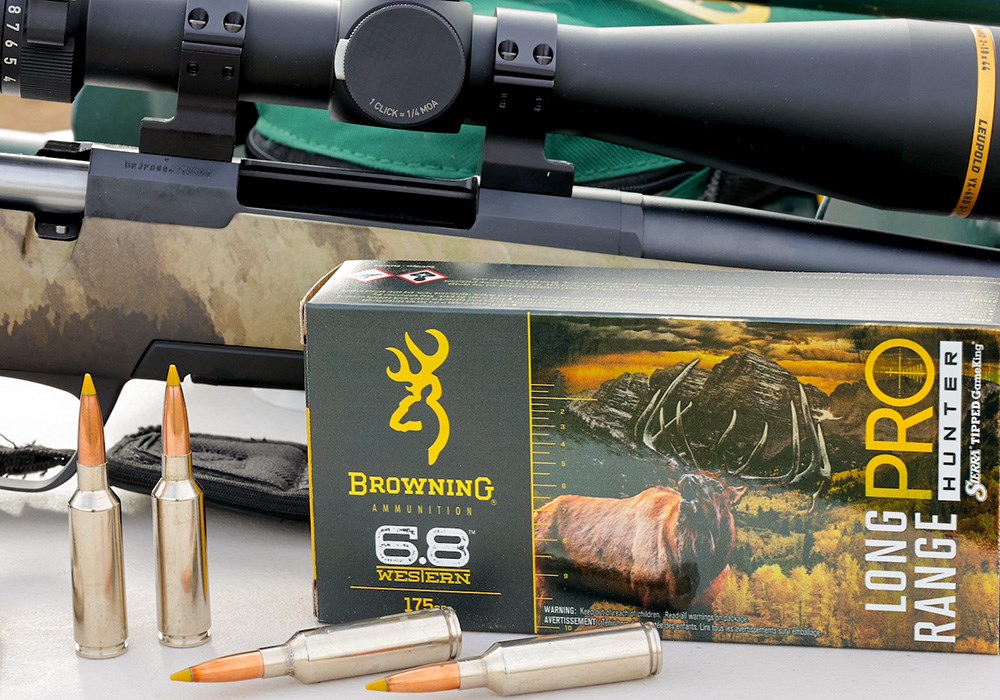
Justin showed me some lovely sandhills country to the north, complete with pheasants, turkey, mule deer, a few pronghorn, but no whitetails. Rather than await their late-afternoon awakening, we decided to drive back to the morning’s search area and watch the hills we hadn’t walked. Chances were good that undisturbed bucks were hiding out there.
We parked just off a county road and watched a flurry of chasing in a line of trees a mile west. Young bucks were working the does hard. Or the does were teasing the bucks hard. But no antlers appeared looking wide or heavy.
“There’s a fair buck coming onto the east side of the corn,” Justin said. “What do you think of him?”
“Average. Nothing to get excited about on the second day.” I rolled out to set up some photos of crawling, glassing and aiming the rifle. The afternoon wind was still gusting. I’d replaced the spotting scope with the camera atop the tripod. And of course that’s when Justin spotted our buck.
“Big deer coming out of the hills!” My guide’s head was halfway out of the truck window. I crawled back, unscrewing the camera as I went. But the tripod wasn’t needed. The 8X binocular was more than enough to show us this was a buck worth trying. Heavy. Blocky. Slow. “He isn’t paying any attention to that smaller buck,” Justin said. “Must be old.”

“If we can get into this valley we can knock off 400 to 500 yards,” I said. Our buck was about a half-mile away. Our stalking cover was distance and distance alone, although a fence line offered a slice of camouflage. “Let’s crawl down that fence. The posts will break up our outline a bit.”
This is a wonderful thing about open country whitetails. They don’t pay much attention to anything more than 400 yards away. Time after time I’ve walked toward them in plain view, stopping only when they snapped up to look around. Rarely, if ever, have they spooked. It’s as if they’re hard wired to expect trouble at cougar charging distance rather than wolf pack attack distance. So, literally on hands and knees, Justin and I crawled. And crawled. Until low enough on the slope that the next sand ridge covered our quarry, still sauntering nonchalantly through that corn stubble. The wind had died. Noise might be an issue. But so was time. The rising western horizon was not our friend. We stood. We ran.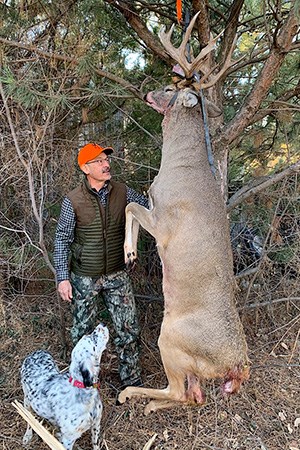
“Better chamber a round,” Justin advised when we stood just beneath the fence enclosing the corn on the far side of this ridge. “In case he’s come this way.” I snicked a silvery round into the chamber and clicked on the safety. “I’ll range him. You be ready to shoot.” We stepped up, both of us glassing the field. There was the smaller buck. There at the far end were the smaller bucks chasing the does. “Where is he?”
“Got him!” exclaimed Justin. “Just moseying along the far edge. Where the corn joins the pasture grass.”
“Oh yeah. Long way. Let me see what this sight picture looks like.” I sat, pressed my back against a wooden fence post, propped my portable shooting sticks under the fore-end, my arms against my knees, and leveled the rifle at the buck. Just standing there, looking bored, almost sleepy. I confirmed my laser reading with Justin’s. They were within 2 yards of one another and he was behind me so … I dialed the yardage and twisted the power ring to 18X. The reticle held steady over the buck’s right shoulder. Dead calm.
“Watch my shot. If he continues standing calmly I think I’ll take it.” Seconds later the trigger broke, the rifle recoiled and I lost my sight picture. Couldn’t get it back. “Where’d he go? Is he running west?”
“Down! Straight down! You dumped him!”
“By that biggest clump of yucca?”
“Yes. You can see one antler sticking up. That brown spot is not sand. That’s him. Stay on him. Let’s be ready for another shot.”
But another shot wasn’t needed. The 175-grain .277 Sierra had flown true, punching through one shoulder and out the other. An accurate rifle spitting an accurate bullet directed toward its target with an accurate scope proved ideal tools for ending yet another hunt for whitetail bucks in odd places.


































